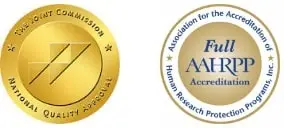Angina Treatment – FAQs
Angina Pectoris (“angina”) is a recurring pain or discomfort in the chest that happens when some part of the heart does not receive enough blood. It is a common symptom of coronary heart disease, which occurs when vessels that carry blood to the heart become narrowed and blocked due to atherosclerosis Angina feels like a pressing or squeezing pain, usually in the chest under the breast bone, but sometimes in the shoulders, arms, neck, jaws, or back. Angina is usually triggered by exertion. It is usually relieved within a few minutes by resting or by taking prescribed angina medicine.
Episodes of angina occur when the heart’s need for oxygen increases beyond the oxygen available from the blood nourishing the heart. Physical exertion is the most common trigger for angina. Other triggers can be emotional stress, extreme cold or heat, heavy meals, alcohol, and cigarette smoking.
An episode of angina is not a heart attack. Angina pain means that some of the heart muscle in not getting enough blood temporarily–for example, during exercise, when the heart has to work harder. The pain does NOT mean that the heart muscle is suffering irreversible, permanent damage. Episodes of angina seldom cause permanent damage to heart muscle.In contrast, a heart attack occurs when the blood flow to a part of the heart is suddenly and permanently cut off. This causes permanent damage to the heart muscle. Typically, the chest pain is more severe, lasts longer, and does not go away with rest or with medicine that was previously effective. However, the symptoms of a heart attack are varied and may be considerably milder.When someone has a repeating but stable pattern of angina, an episode of angina does not mean that a heart attack is about to happen. In contrast, when the pattern of angina changes–if episodes become more frequent, last longer, or occur without exercise–the risk of heart attack in subsequent days or weeks is much higher.
- Use the stairs–up and down–instead of the elevator. Start with one flight of stairs and gradually build up to more.
- Park a few blocks from the office or store and walk the rest of the way. Or if you ride on public transportation, get off a stop or two early and walk a few blocks.
- Instead of eating that extra snack, take a brisk stroll around the neighbourhood.
- Mow your own lawn.


